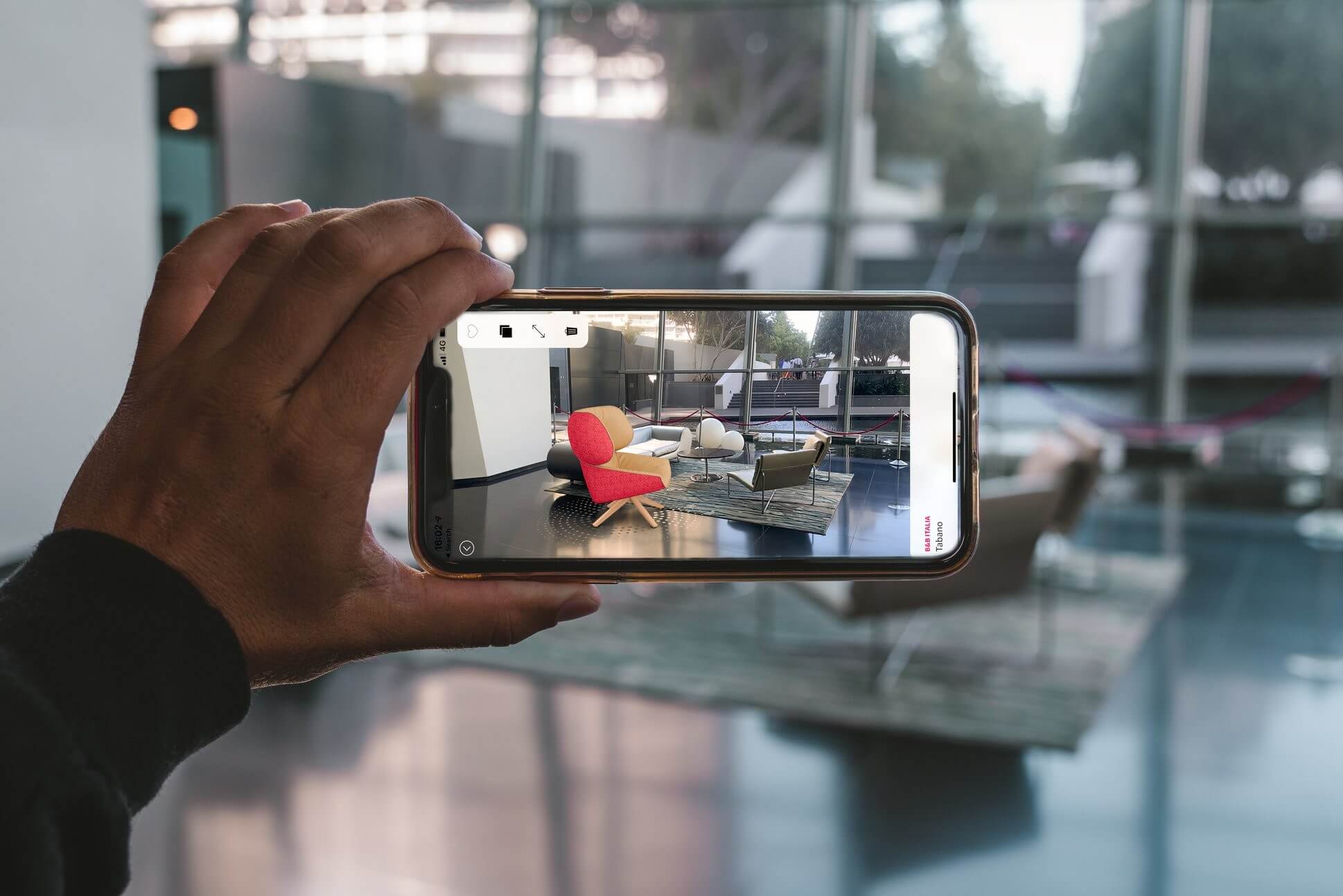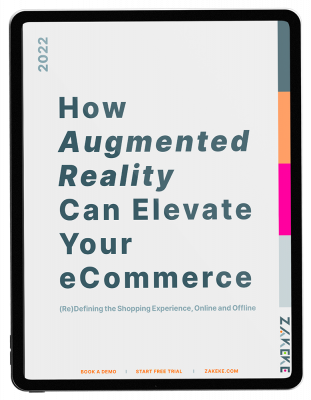Virtual Reality (VR) and Augmented Reality (AR) have created quite a buzz in the tech world. Their applications in retail grow by the day, and organizations adopting them are seeing a quantum leap in revenue.
According to Deloitte research, 90% of companies with annual revenues between $100 million and $1 billion are now leveraging AR and VR. Both VR and AR have great potential for industrial applications but are currently seeing the biggest growth in e-commerce and gaming.
Augmented Reality vs Virtual Reality: how do these technologies differ from each other?
In this guide, we’ll discuss VR and AR in detail and explain what Augmented Reality and Virtual Reality are. We’ll also look into their application in e-commerce. Let’s dive in!
What is Virtual Reality (VR)?
Virtual Reality is a simulated experience that can be identical or different from the real world. By using appropriate hardware, VR allows users to be fully immersed in the virtual world.
VR is achieved through the use of computerized systems to generate three-dimensional images that can be interacted with in a seemingly real way by users wearing specialized headsets.
These headsets track a person’s movement, allowing them to see and interact with the virtual world in an immersive way. Most headsets have built-in audio, which allows users to hear what’s happening around them.
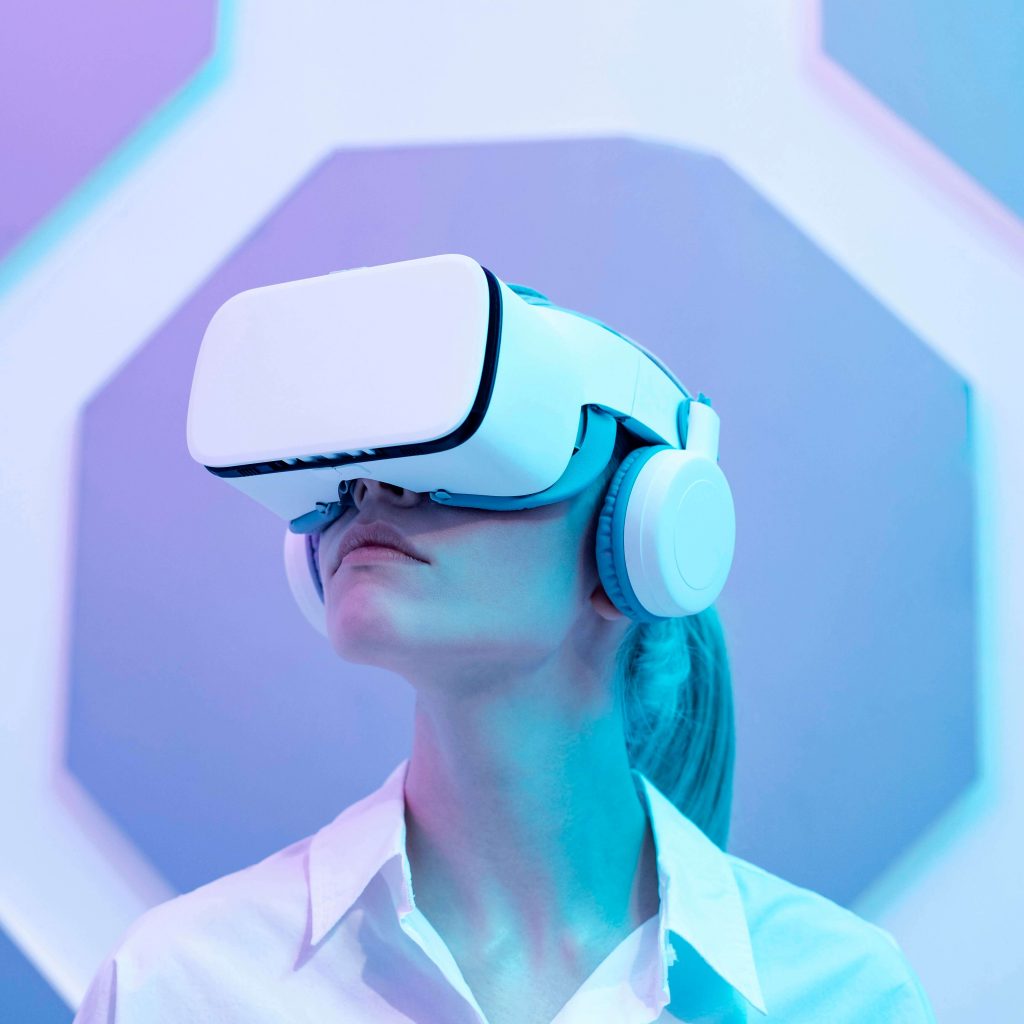
How does Virtual Reality work?
The focus of virtual reality is to simulate a new reality. By using appropriate hardware, users can see and interact with the virtual world. To explore and interact with 3D environments, the user utilizes computers and sensory devices like headsets, gloves, and controllers.
Due to the special lenses in the headsets and controllers with sensors, users can experience the virtual world and interact with it as if they were in the real world.
What is Augmented Reality?
As the name implies, Augmented Reality (AR) augments a user’s surroundings by adding digital elements to a live object. It leverages technology to superimpose digital information on the user’s real-world view.
Unlike Virtual Reality, Augmented Reality is accessed using common devices, such as mobile phones. It superimposes content, such as characters on top of a camera viewer or video, which most users have, making it more accessible and usable in retail and e-commerce.
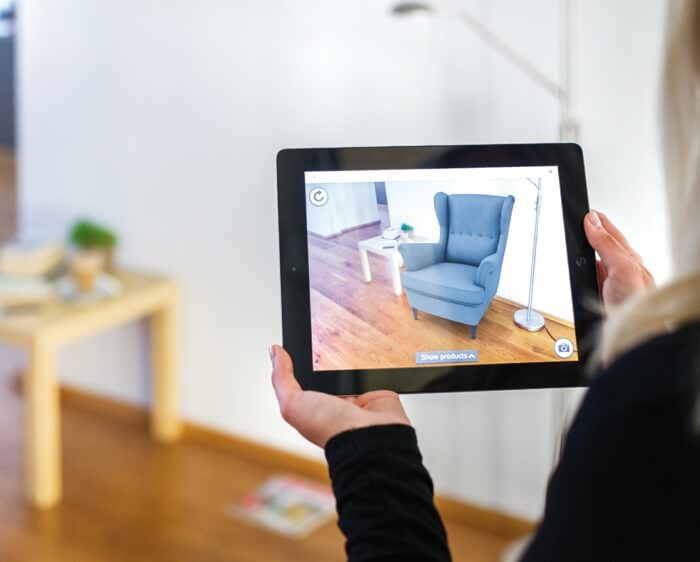
How does Augmented Reality work?
Augmented Reality uses computer vision, mapping, and depth tracking to display appropriate content to the user. This way, all data is collected in real-time via a camera and processed directly.
Using AR, the user’s physical environment is enhanced with digital content in real-time.
Key differences between AR and VR
While both VR and AR provide users with an immersive experience, each technology is unique and uses different equipment.
So, what’s the main difference between them? The key difference is in the way they meet the user’s needs: Virtual Reality tends to replace the real world, while Augmented Reality attempts to add virtual elements to it by projecting digital content on top of the environment being viewed by the users. In other words, whereas VR replaces your vision, AR adds to it.
Also, since Virtual Reality focuses on total immersion, the devices used require shutting users off from the real world by blocking their field of view to project VR content instead. In contrast, it’s possible to use Augmented Reality in both 2D and 3D environments, such as on smartphones, so users don’t need to be shut off from the real world.
Here are the key differences between VR and AR.
Virtual Reality
- Purpose: the system replaces reality and simulates the virtual environment;
- Experience: VR is 75% virtual and 25% real;
- Degree of immersion: users are partially immersed in the action;
- Device: special equipment needed (VR headsets, controllers, gloves, etc.);
- Enhancement target: VR enhances a fictional reality;
- Control of the senses: users are controlled by the system.
Augmented Reality
- Purpose: the system adds digital information to augment the real-world environment;
- Experience: AR is 25% virtual and 75% real;
- Degree of immersion: users are fully immersed in the action;
- Device: no special devices are needed. A smartphone is enough to experience AR;
- Enhancement target: AR enhances both real and virtual worlds;
- Control of the senses: users can control their presence in the real world.
How to use AR and VR in e-commerce?
Virtual Reality and Augmented Reality are extensively being used in today’s business world. From retail stores to the automotive industry to designers, brands are harnessing the power of VR and AR to improve Customer Experience, boost sales, and achieve a competitive edge.
Augmented Reality vs VR: here are some examples of brands using them in their e-commerce stores.
- IKEA
IKEA, a global home furnishing retailer, has taken the front seat in adopting AR. In 2017, the retail giant launched the “IKEA Place” app that lets customers experience the benefits of AR through their phones.
Through the IKEA Place app, shoppers can envision IKEA furniture in their homes by overlaying a 3D representation of the furniture with a live video stream of their homes.
- Gucci
Gucci, one of the most important international fashion & luxury brands, was one of the first brands to leverage Augmented Reality in its stores nationwide. The Italian fashion brand added an AR feature to the Gucci app – a feature that allows users to “try on” sneakers.
Users can virtually try on products through the app, a feature that gives them a visual representation of how the product will look on them in real life.
- Wayfair
IKEA isn’t the only furniture company leveraging AR.
In 2020, Wayfair introduced an enhanced version of its “View in Room” app to improve the Shopping Experience of its customers. The AR-enabled app allows customers to see how the furniture would look in their home and whether it will fit their space.
For furniture retailers, the use of AR can significantly drive sales. Research has shown that consumers are 11 times more likely to purchase furniture if they can see what it would look like in their homes using AR.
And it’s not just AR that’s gaining traction. VR adoption is also being widely used in the manufacturing and entertainment industries. For example, architects use VR to design homes and let their clients see how the property will look even before the foundation is laid.
Benefits of using AR and VR in e-commerce
Augmented Reality and Virtual Reality are changing the e-commerce landscape, offering a more immersive Shopping Experience to customers. Here are some of the benefits of using AR and VR in e-commerce:
- Improved Customer Experience: AR and VR allow customers to visualize products in a more realistic way, giving them a better understanding of what they’re buying. These technologies can improve the Customer Experience and increase Customer Satisfaction;
- Reduced returns: AR and VR can reduce product returns due to mismatched expectations giving customers more information about their products;
- Increased engagement: AR and VR experiences are more engaging and than traditional e-commerce, leading to increased customer loyalty;
- Enhance product details and materials: VR and AR can highlight the details of your products allowing customers to have a complete Shopping Experience and find out all the details of your products as if they could touch them;
- Improved marketing strategies: AR and VR technology can be used to create engaging marketing campaigns that capture customers’ attention and drive sales;
- Cost savings: AR and VR can help reduce the cost of creating catalogs with professional photos, while also reducing the need for expensive showroom spaces.
AR and VR in e-commerce: what’s next?
Augmented Reality and Virtual Reality have defined a new era in retail and e-commerce and are transforming the way we shop and interact with products online.
Retailers are increasingly adopting AR and VR in their stores as these technologies have proven themselves powerful tools for storytelling, product visualization, and increasing engagement.
If you’re yet to implement AR or VR in your e-commerce store, you’re missing out on potential sales opportunities. These technologies are the future of retail: thanks to Augmented Reality, it’s possible to create 3D catalogs that allow consumers to get in touch with the product, enhancing the Customer Experience and consequently boosting sales.
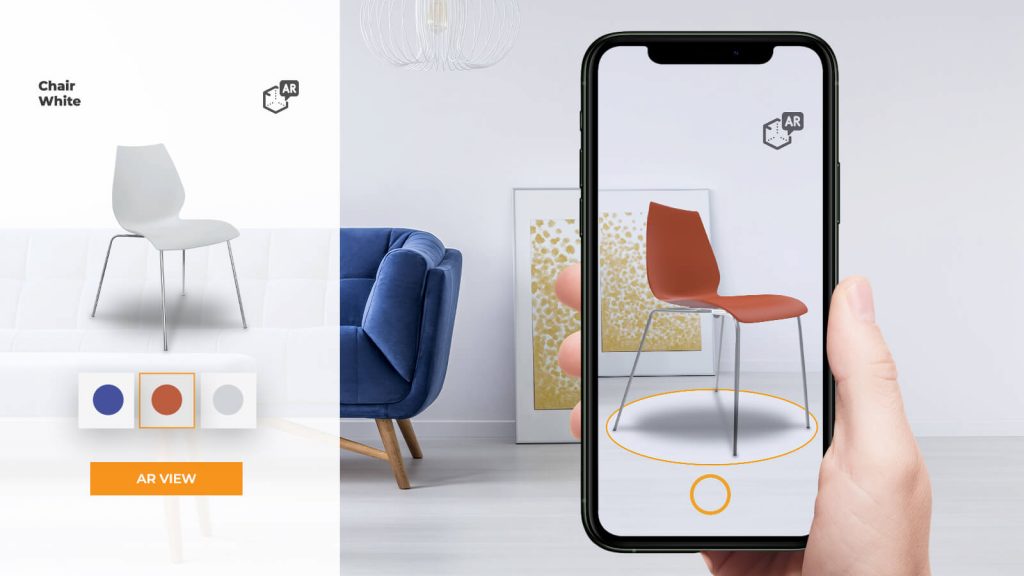
Whether you’re looking to add AR/VR to your apps or implement it in your e-commerce store, Zakeke is your one-stop shop. Get in touch with us today and start using AR in your e-commerce: take advantage of our 14-day free trial to see how this platform can improve your business.
If you are wondering what you can do with Zakeke, check out our DEMO STORE.


